

Matt Campbell
2026 Hyundai Tucson Hybrid review
5 Hours Ago
Big family in tow? The Honda Odyssey MPV is the opposite of aspirational, but as a fit-for-purpose appliance it does its job well.
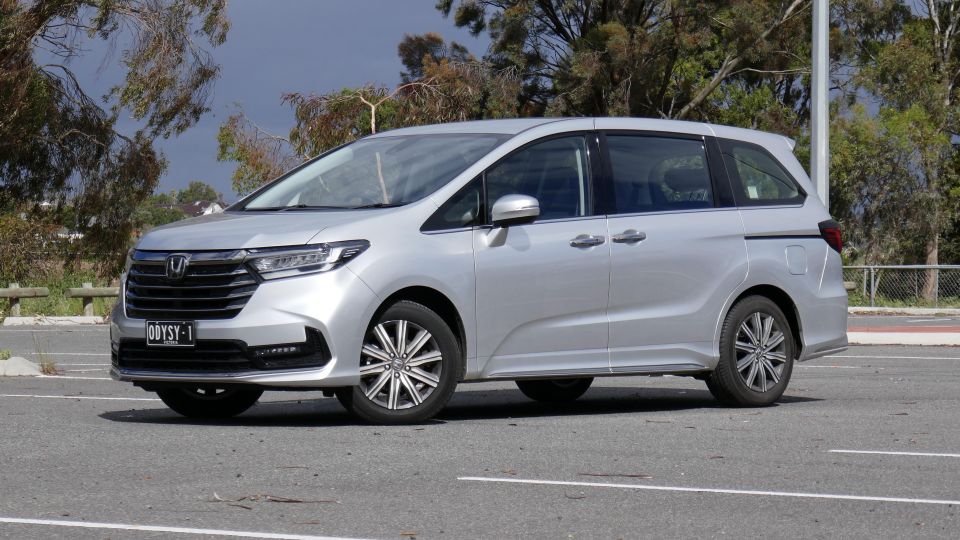


Senior Contributor
New from
$51,150
excl. on-roads

Senior Contributor
New from
$51,150
excl. on-roads


Senior Contributor
New from
$51,150
excl. on-roads

Senior Contributor
New from
$51,150
excl. on-roads
Quickly see how this car stacks up against its competition. Select any benchmark to see more details.
Where expert car reviews meet expert car buying – CarExpert gives you trusted advice, personalised service and real savings on your next new car.
Honda’s current-generation Odyssey people-mover isn’t much longer for this world. The Japanese plant that makes it shuts in March 2022 and there’s no word of a replacement.
Which means if you’re after a new family bus with the trusted ‘H’ badge, now is the time to strike.
While the rise of large SUVs has put a dent in the humble people-mover’s business model, as a fit-for-purpose tool the latter wins every day of the week.
Next to a big SUV, it’s more wieldy, easier to see out of, has more room inside by far, and costs less. The arguments for shelving your pride are stacking up…
While the Kia Carnival dominates the sales race (Honda in fairness doesn’t target fleets as much), and the cheap LDV G10 is making its move, the evergreen Odyssey is still a solid package, particularly for urban users.
Honda’s cars are sold at set prices with no scope for haggling, beyond your trade-in. We have the base 2022 Honda Odyssey Vi L7 here at $48,700 drive-away, while those after some more luxuries can get the Odyssey Vi LX7 for $56,000.
A seven-seat MPV under $50,000 in this climate is quite reasonable. For context the Odyssey costs the same as the substantially less practical CR-V VTi L7.
The base Kia Carnival S costs $50,890 drive-away by contrast, and offers fewer features (no powered sliding doors like the Honda, for example).
Those on a budget can go for the China-made LDV G10 which opens at a crazy cheap $31,490 drive-away, but also carries a three-star ANCAP crash rating.

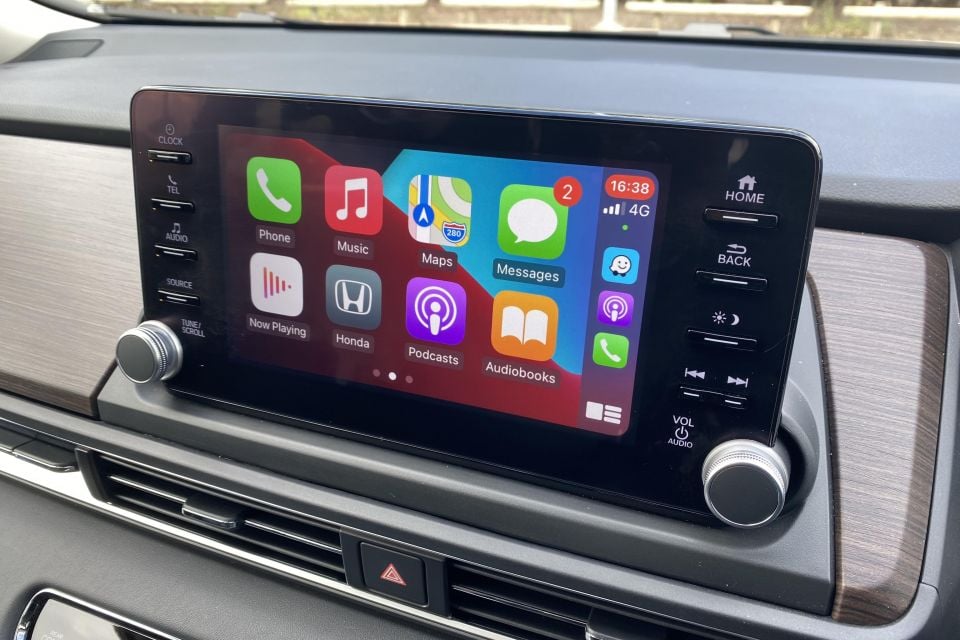
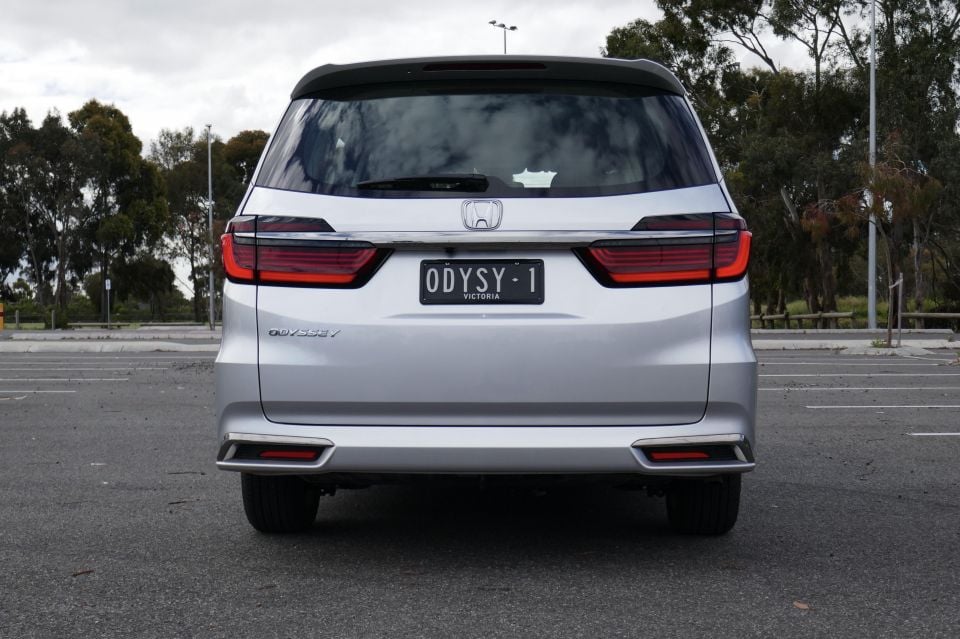
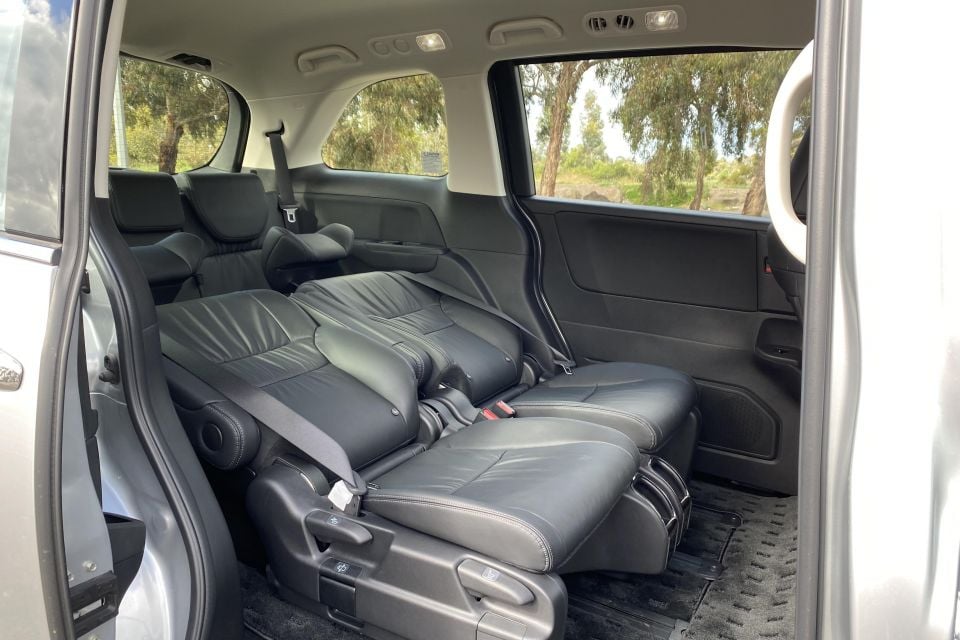
Buy your new car without the stress. It's fast, simple and completely free.

Great service from Travis and team, second time I have used this business would not hesitate to recommend them to anyone
Craig C.
Purchased a Ford Ranger in Sunshine Coast, QLD
CarExpert helped Craig save thousands on his Ford Ranger, now let us save you on your next new car.
Find a dealOutside are electric-powered sliding side doors; LED headlights, tail lights and daytime running lights; sequential LED indicators, a proximity entry key fob, and 17-inch alloy wheels with a space-saver spare.
Inside there’s single-zone climate control with vents for all rows and rear fan controls, manually-adjustable but heated front seats, black leather-appointed seat trim, an 8.0-inch touchscreen, Apple CarPlay and Android Auto, Bluetooth phone and audio, two USB points, six speakers, and a three-view reversing camera.
The Vi LX7 adds a sunroof, auto-folding mirrors, electric hands-free tailgate, gesture-controlled side doors, LED active cornering lights, three-zone climate control, third-row floor vents, powered front seats, and Garmin satellite navigation with live traffic updates.
MORE: 2021 Honda Odyssey price and specs

Safety is of paramount importance in a people-mover.
The Odyssey carries a five-star ANCAP rating, but the 2014 date stamp means it’s old. Still, it speaks well about the crash structure at least. During testing it achieved an overall crash rating of 32.75 out of 37.
There are dual front and front-side airbags, as well as side curtain airbags that cover all seat rows in full. You can see deployment points on the D-pillar.
There’s also a proper blind-spot monitoring system in place of the dated left-hand side-only LaneWatch camera solution found on Honda’s other models.
Honda has also fitted its ‘Honda Sensing’ driver-assist technology package as standard, comprising AEB, lane-keep assist (with steering corrections), and active cruise control that cuts off just before you come to a stop.
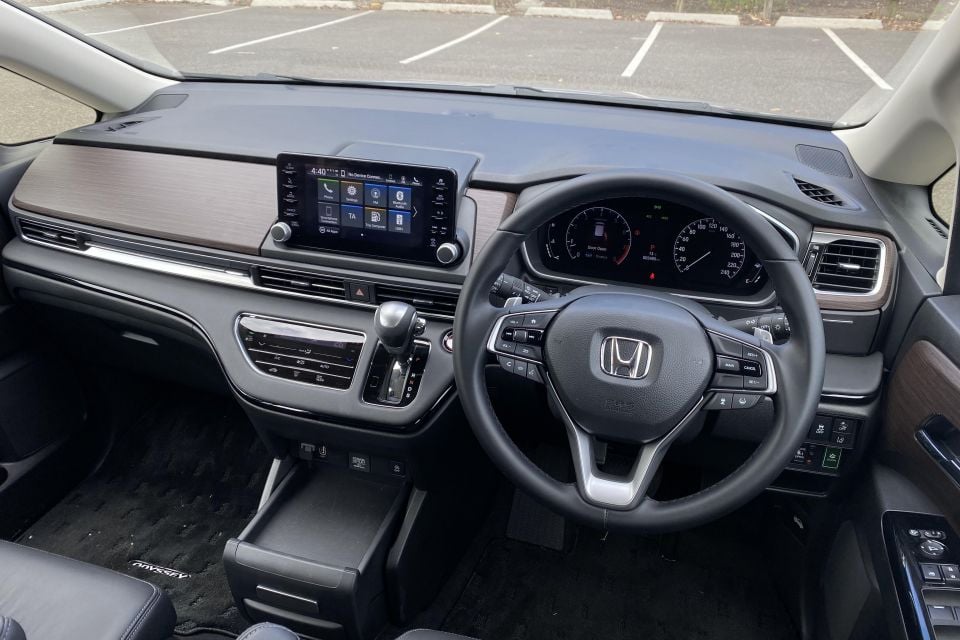
The seats are almost entirely devoid of under-thigh support, though the pull-down arm rests serve to help stabilise you in corners. The wheel is nicely finished in leather, with logical buttons for audio, lane assist, and active cruise control.
The instruments have analogue speed and tachometer readouts, while the left gauge has a changeable screen that shows you things such as your fuel use, and active safety settings. The fact there’s no digital speedo rankles a bit, however.
To your right near your knee are buttons to open to the sliding side doors electrically, which is good ergonomic placement. Above this sits a neat little cupholder drawer ahead of the vent.
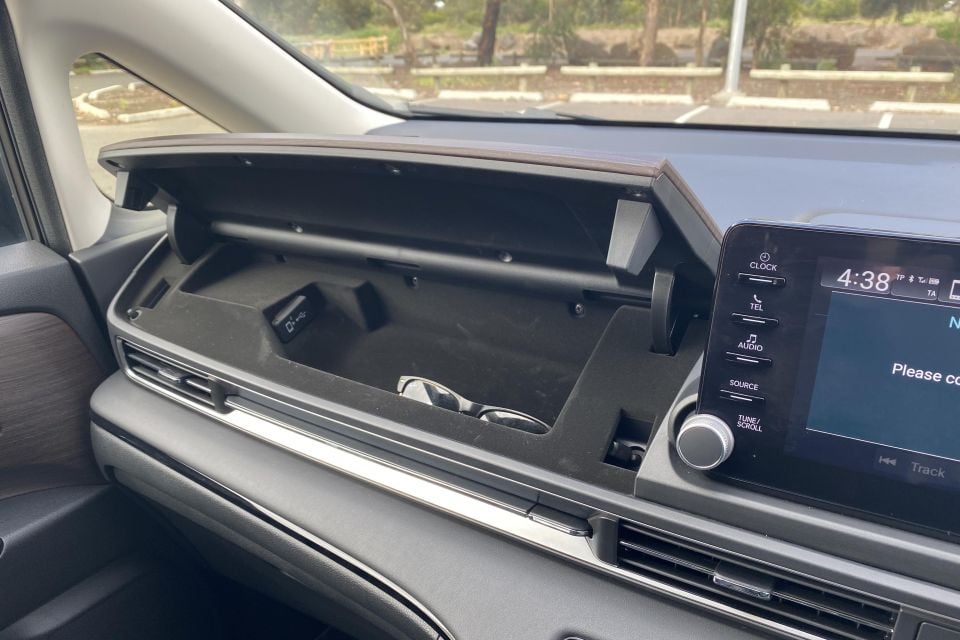
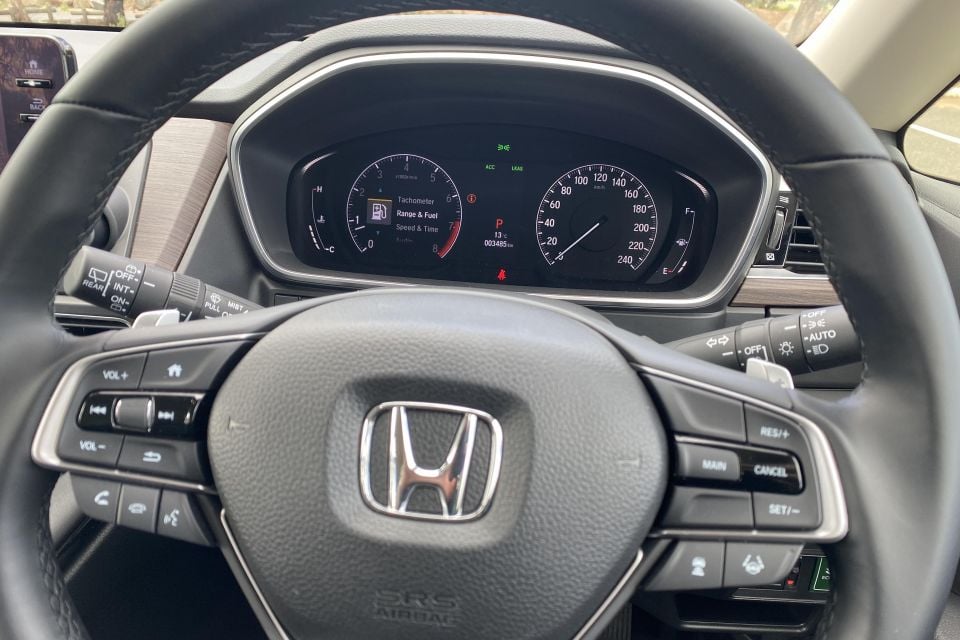
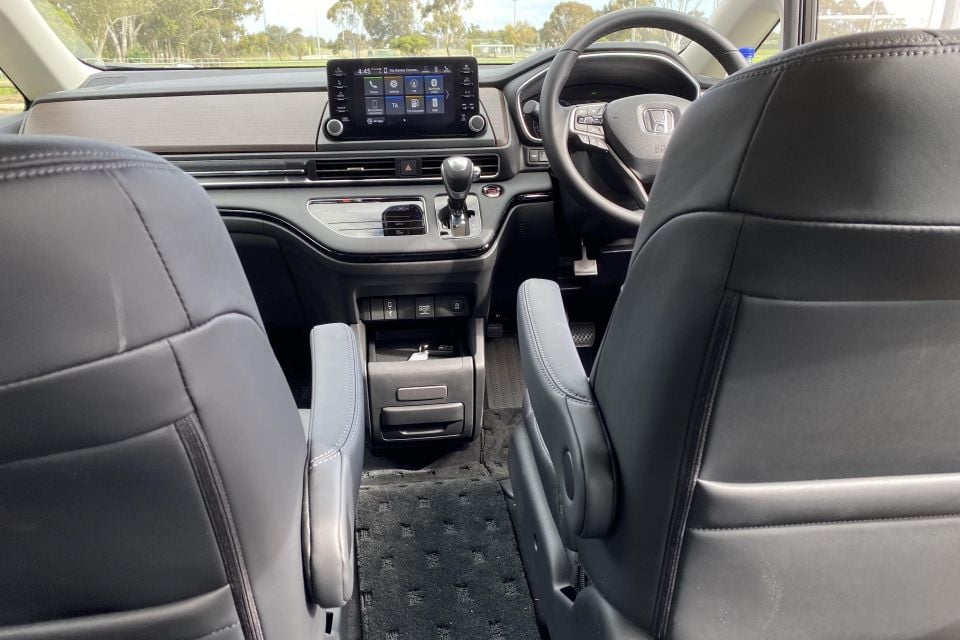
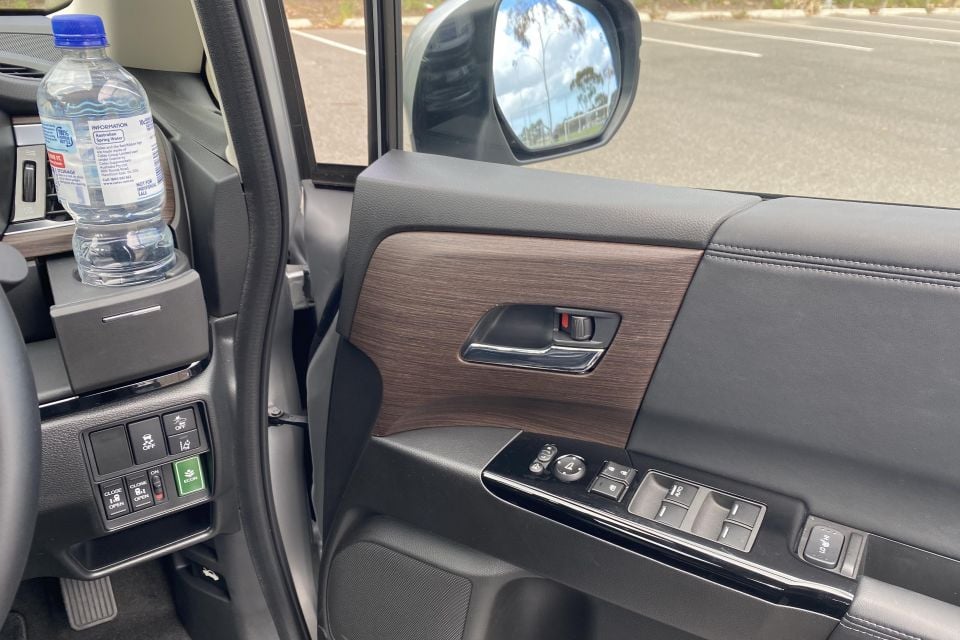
There’s a real feeling of space, and not just on account of the high seat, large windows, and expansive forward view afforded by the thin pillars.
There’s an open section between the front seats with room for bags and stuff, but strangely no genuine console accessory. A velcro-bottom box would be ideal, to stick to those deep-pile accessory carpets (which are really barefoot friendly).
The centre touchscreen is easy to reach but feels a generation out of date. It offers wired phone mirroring and a three-view (medium-quality resolution) parking camera, but isn’t the final word in processing or graphics. The Kia Carnival’s newer system is more advanced.

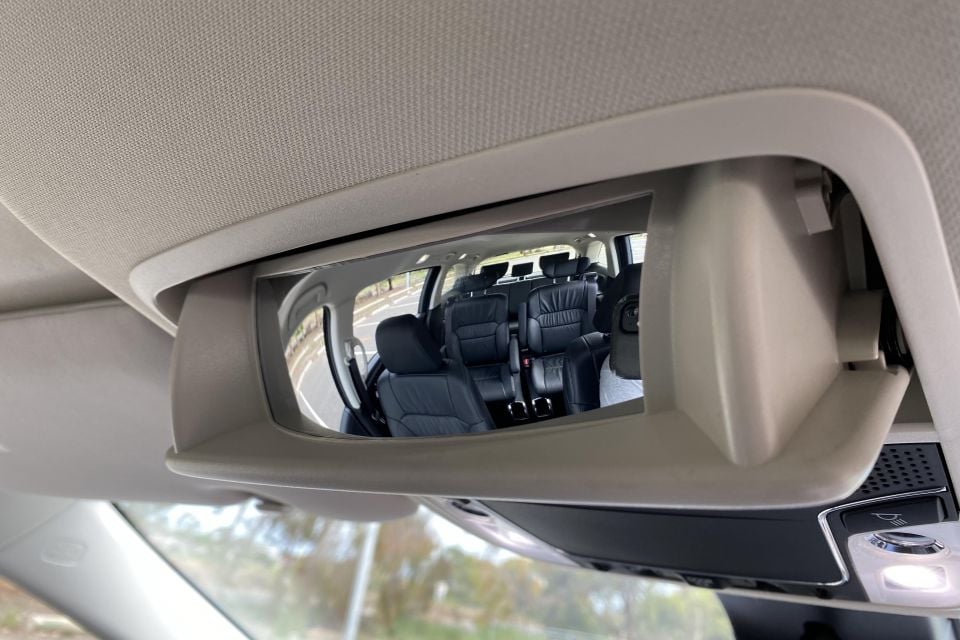
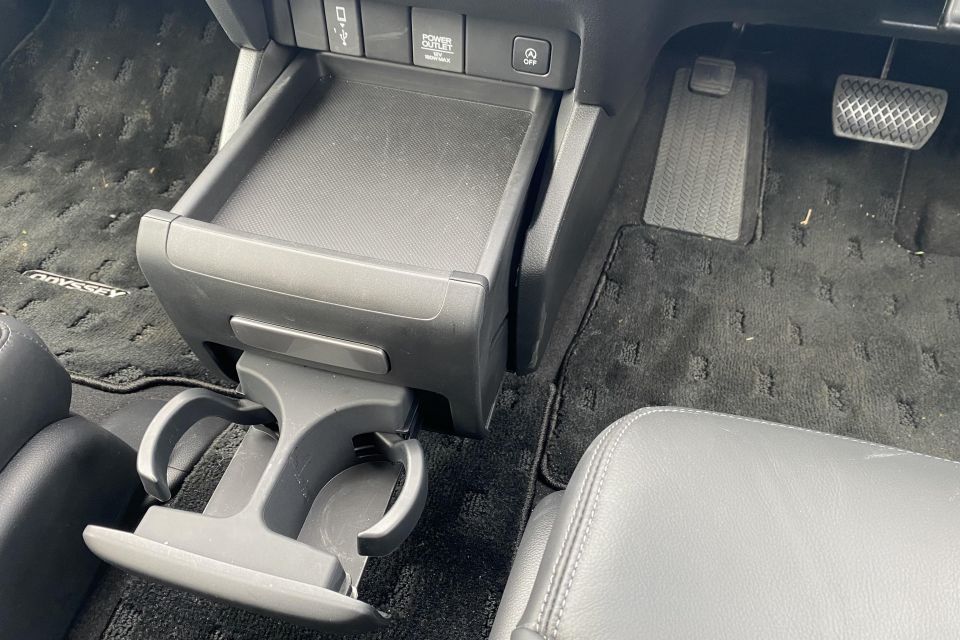
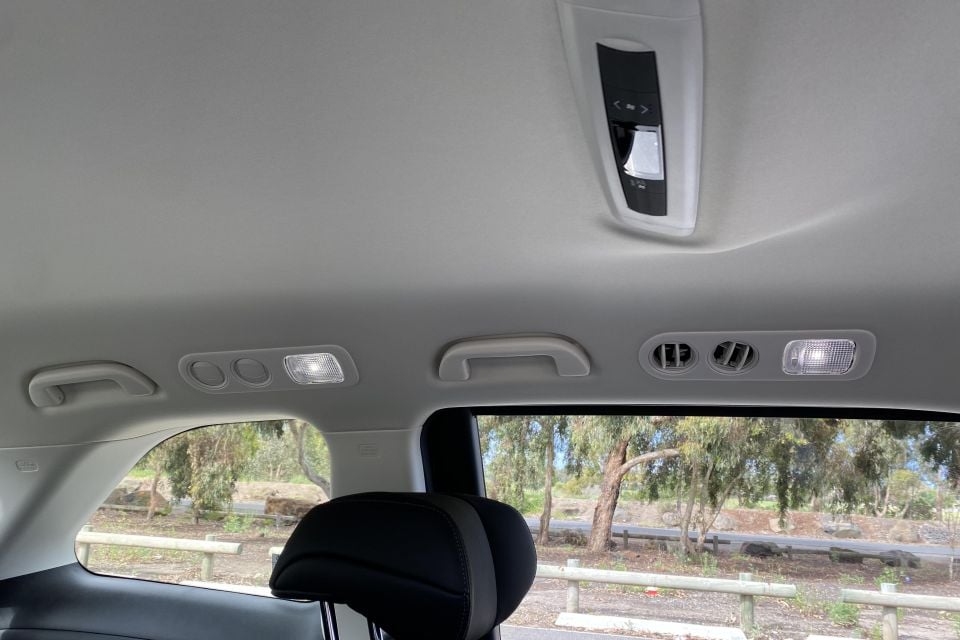
Below this is a red starter button and a slick little capacitive climate control array which actually works really well. The gear stick is mounted high up on the dash like many MPVs, and in the place of a normal transmission tunnel is a pull-out storage tray with cupholders.
There’s a heap of storage beyond this, including a sunglasses holder in the roof with a full-cabin viewing curved glass display, big bottle bins in the doors, and a second felt-lined cubby box above the glovebox covered in a rather nice faux wood panel.
In old-school Honda style, the interior touch points use nice padded materials, the seat leather manages to feel both respectably high quality and hard wearing, and the build quality feels strong enough to handle a decade of abuse. It’s one of Honda’s nicer cabins.
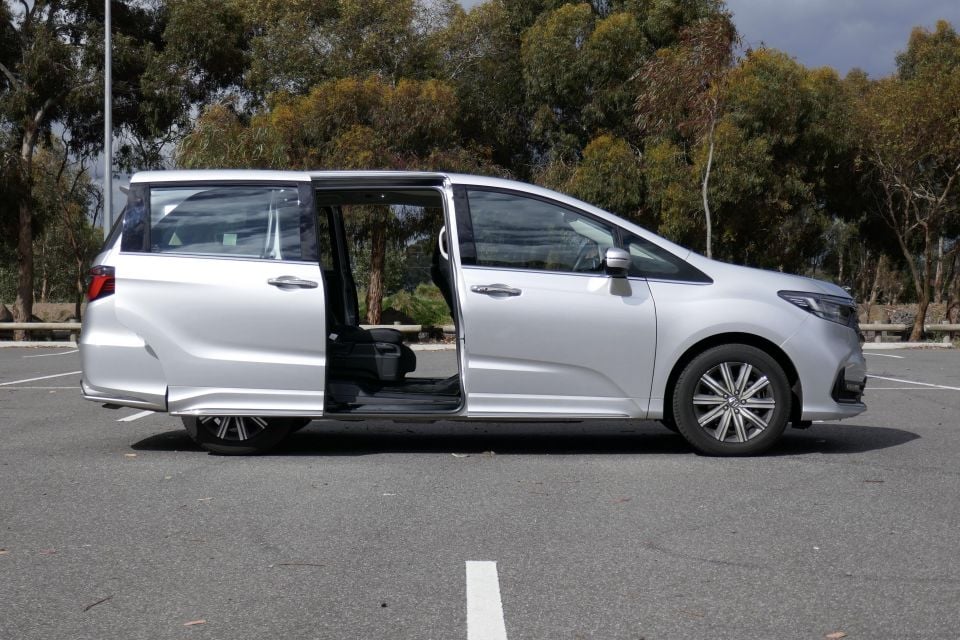
The twin electric sliding side doors open with a single tug of the handle, or via buttons either inside the car or on the key fob.
No SUV with normal doors comes even close to offering such a wide aperture (750mm by 1230mm), and it’s upsides like this that make an old-fashioned MPV really stand out.
Those middle captain’s chairs (standard on both grades) don’t only recline like a business class seat on a Qantas Dreamliner, they also move inwards to be closer together, thereby allowing a greater degree of sliding fore and aft by tucking inside the wheel wells. Robert Wadlow (Google him) would be comfortable.
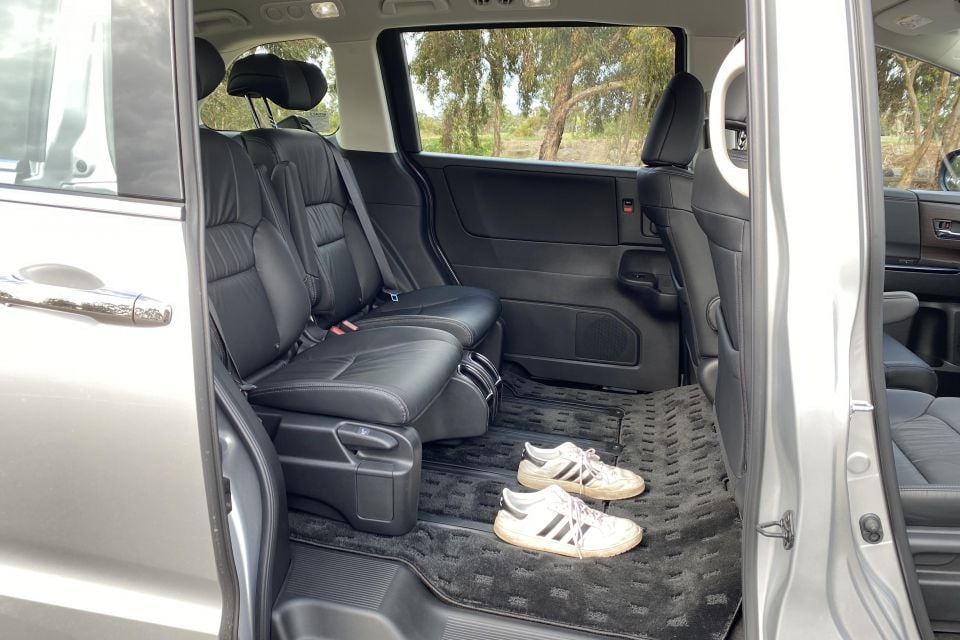
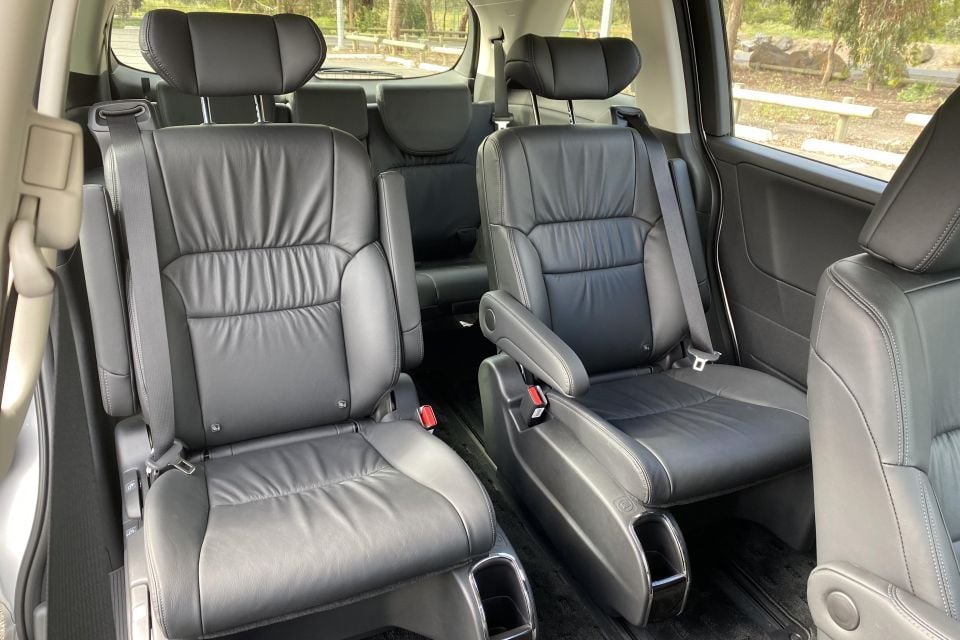

Both of these seats also come with lovely sculptured headrests, and each has ISOFIX and top tethers for the two smallest kids.
Access to the 40:20:40 third row is as easy as pulling a lever that makes the kerbside captain’s chair tilt and slide forwards.
There are actually three rear seat bases and three over-shoulder seatbelts, plus anchorage points (but no ISOFIX in the third row). I had ample legroom, though headroom is best saved for those 180cm or less.
It could be easier for the third-row occupant to slide the second row seats back into place once they’re situated, by the way, instead of having to reach right around to the front-lower-side of the captain’s chair ahead of them.

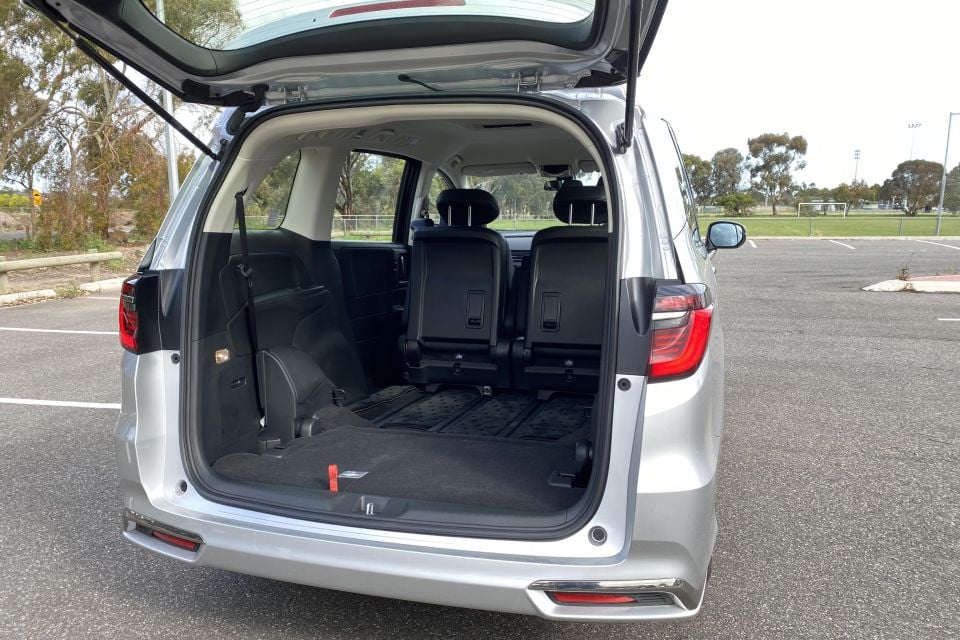
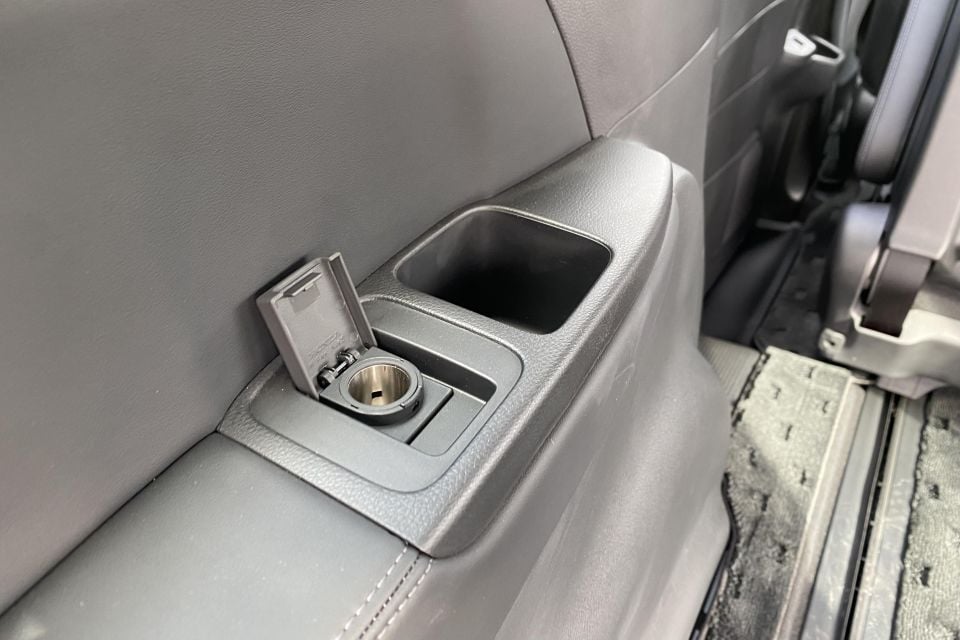
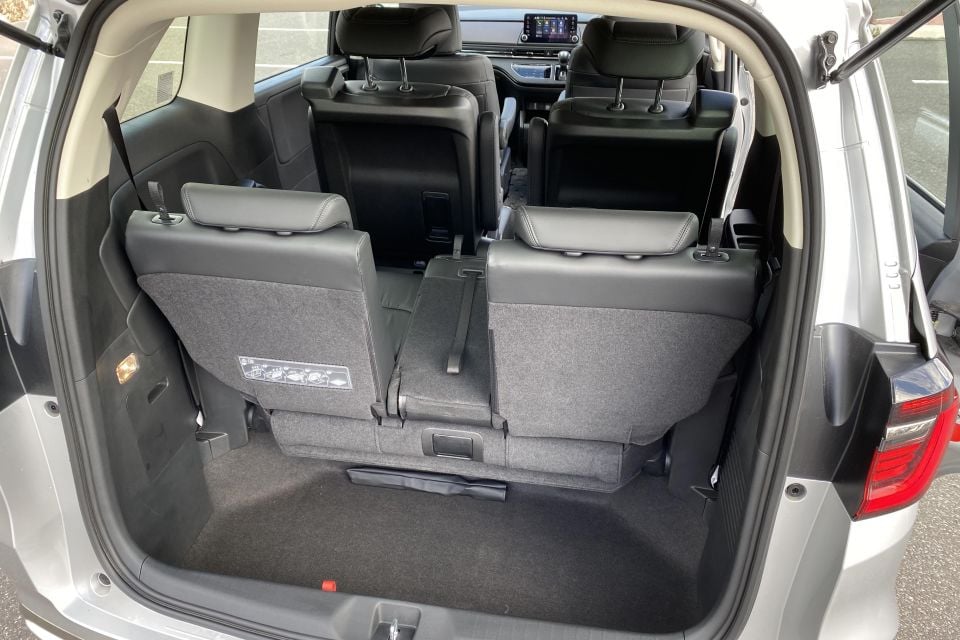
While all three rows have roof vents with a roof-mounted control pad, endless storage options, LED lights and moving headrests, the lack of any USB points aside from the two-up front is a bit incongruous.
In classic clever Honda packaging style, the third-row seat bench elegantly tumbles and folds away into a hole in the floor. When said third row is in use, that deep hole become somewhere to fit a few suitcases.
All up, the Odyssey has a lower floor, taller roof, bigger windows, and larger side doors than any price-point SUV, and for those regularly carrying six-plus people makes more sense.
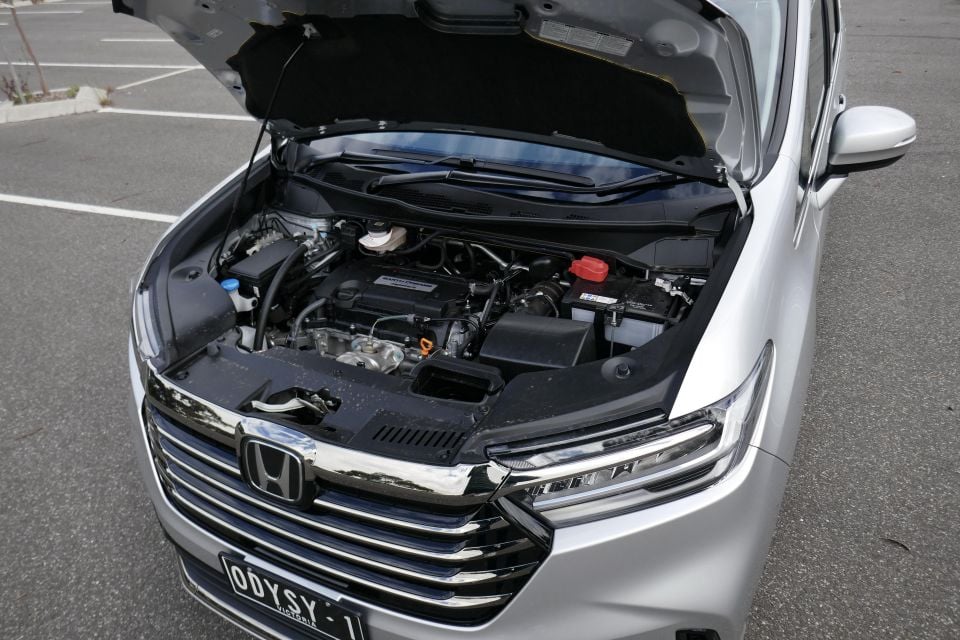
There’s just the one engine option, a 2.4-litre naturally-aspirated petrol making 129kW at 6200rpm and 225Nm at 4000rpm.
It drives the front wheels and is mated to a CVT automatic with paddles.
Combined-cycle fuel consumption is 8.0 litres per 100km (91 RON), an average of the 10.2L/100km urban route and 6.8L/100km highway route.
We averaged 9.9L/100km over a long mixed route, a figure that would increase with seven occupants rather than three.
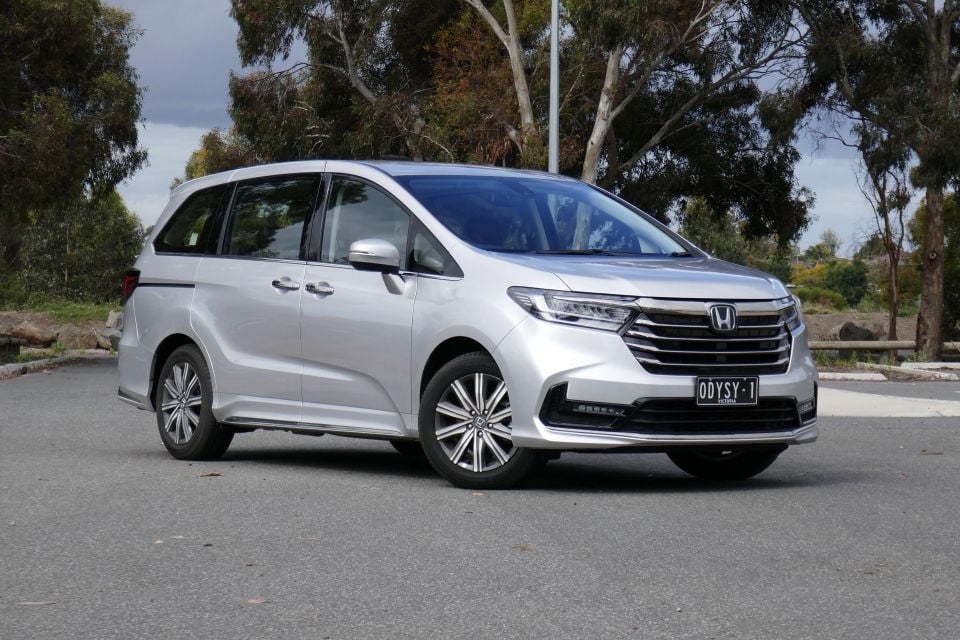
There are positive aspects to the Odyssey, most apparent in town. Its steering is light but consistent and actually quite direct on more trying applications, it offers great exterior vision, and its turning circle is a respectable 10.8 metres.
The engine also offers linear responses in stop/start driving, and small bump absorption is relatively good as well. It feels quite stable on highways and is always an absolute cinch to drive.
Thicker glass all round and new wheel resonators also reduce the intrusion of wind and road noise into the cabin. It’s hushed on good road surfaces, but the NVH does degrade a bit over coarser-chip highways in regional areas.
The ventilated front and solid rear disc brakes haul the Odyssey up well enough, and its pedal feel and body control under braking are both acceptable.
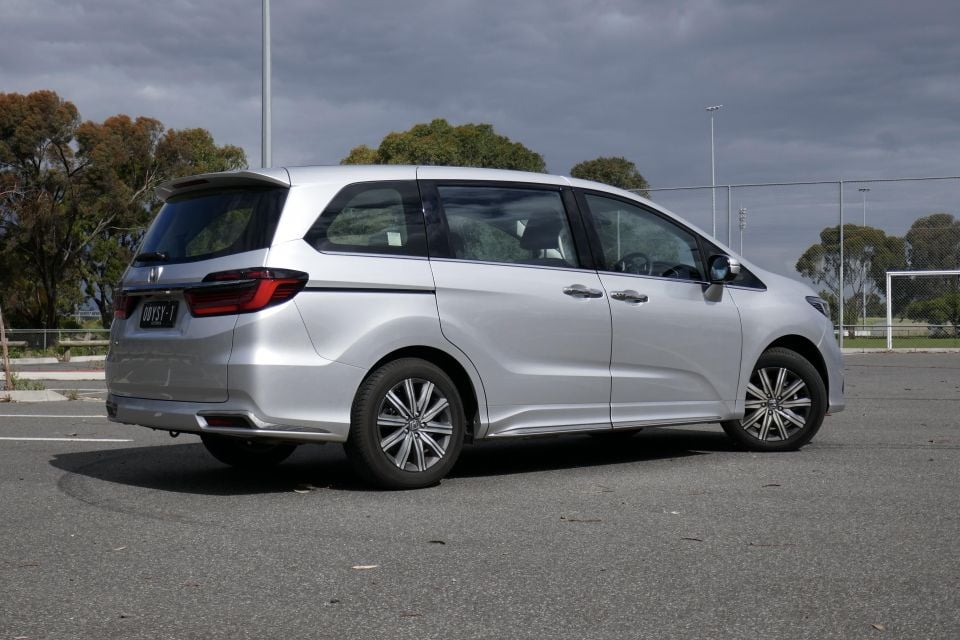
It would be unreasonable to expect it to be a dynamic sensation, but I do think its springs and dampers could offer a little better control of the body over undulating highways, just to keep rear occupants sitting over the torsion-beam rear more settled.
That engine’s refinement also degrades under heavy throttle, because like all Honda i-VTEC units sans turbocharger, it develops its power very high in the rev band, hence more noise.
This, coupled with the one-note CVT means it’s not particularly snappy or silent on overtakes.
If you want a people-mover for long road trips, a more expensive Carnival diesel is punchier, more frugal, and cushier in terms of bump suppression.
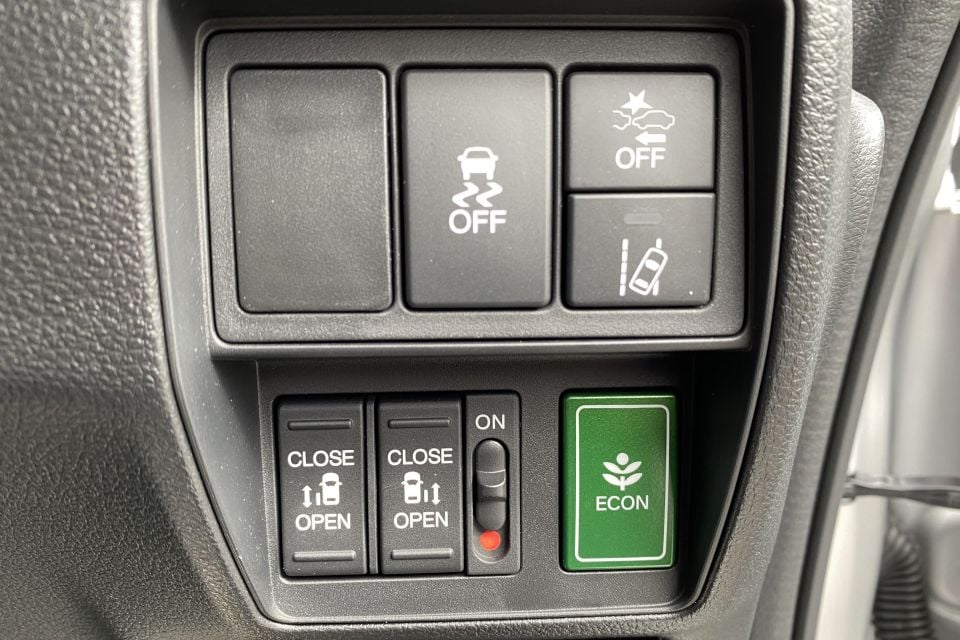
Honda offers a five-year, unlimited-kilometre warranty with the Odyssey. Servicing is required every six months or 10,000km (whichever occurs first).
While these intervals are clearly too short compared to the majority of other manufacturers with annual and 15,000km intervals, each of the first five Honda visits is capped at a cheap $125.
By comparison, the Kia Carnival averages yearly service costs of between $492 (V6) and $515 (diesel), though it does offer longer 15,000km intervals.
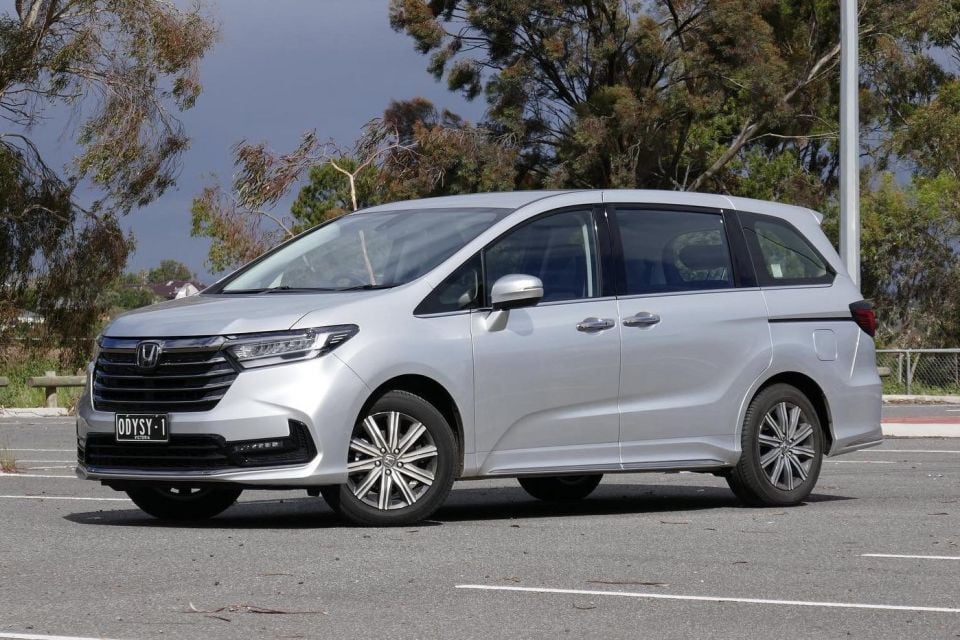
Where expert car reviews meet expert car buying – CarExpert gives you trusted advice, personalised service and real savings on your next new car.
It’s a very sensible vehicle, with a well-built and hugely practical interior the obvious selling point. It’ll leave a hole in Honda Australia’s dwindling range when it’s gone.
As an older design, it doesn’t offer what I’d consider to be a more compelling package than the top-selling Kia Carnival.
However if you’re someone who ferries numerous kids or clients , it’s miles better for the task than any equivalent-price SUV – and those captain’s chairs are a real point of difference.

Click the images for the full gallery
MORE: Everything Honda Odyssey
Where expert car reviews meet expert car buying – CarExpert gives you trusted advice, personalised service and real savings on your next new car.


Matt Campbell
5 Hours Ago


Max Davies
21 Hours Ago


William Stopford
21 Hours Ago


Derek Fung
21 Hours Ago


Max Davies
1 Day Ago


William Stopford
2 Days Ago